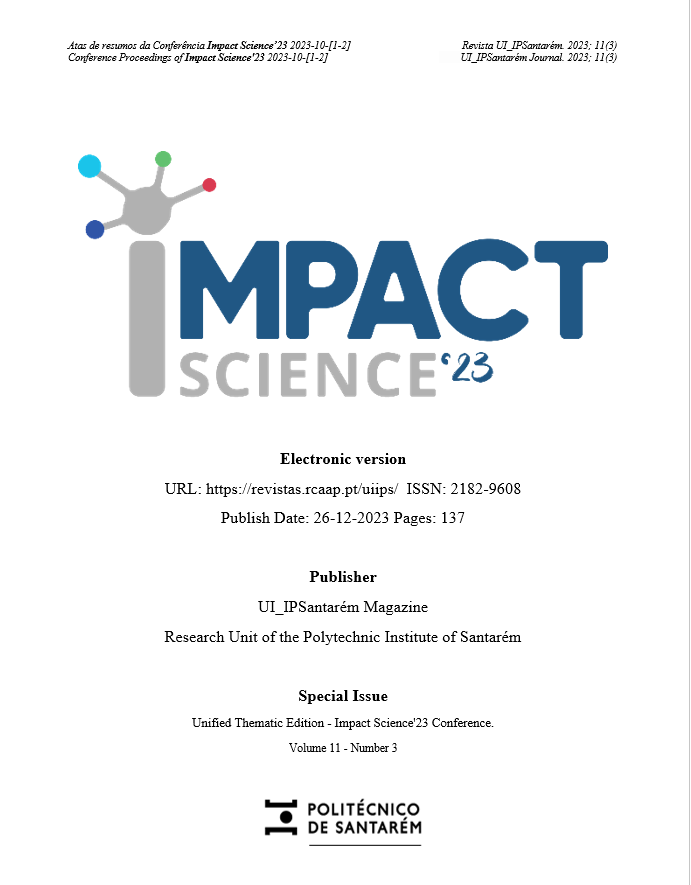Maize crop cycle: vegetation cover analysis using Sentinel-2 derived vegetation indices
DOI:
https://doi.org/10.25746/ruiips.v11.i3.32349Keywords:
crop vigor, EVI, multispectral images, NDRE, NDVIAbstract
Vegetation indices are now widely used to assess and characterize vegetation cover. In agriculture, these indices make it possible to obtain information throughout the crop cycle and to act in a timely manner, if necessary.
In this study, different vegetation indices (NDVI - Normalized Difference Vegetation Index, NDRE - Normalized Difference Red Edge Index, EVI - Enhanced Vegetation Index) were calculated to assess vegetative vigor. These indices were obtained from images from the European Space Agency's Sentinel-2 satellite, from May to September 2021. This analysis focused on the maize crop, in a plot located in Ribatejo (38.994975°; -8.369681°). ArcGis TM and Microsoft Excel software were used for data processing.
This work aims to: a) develop thematic vegetation index maps to evaluate maize productivity; b) analyze the behavior of vegetation indices throughout the cultural crop cycle; c) understand which index or indices are more reliable in the more advanced stages of the crop cycle.
The correlation between NDVI and EVI was strong (r=0.95) but EVI showed differences in maize reflectance at stages of the crop cycle where NDVI showed saturation. The NDRE showed a strong correlation with the NDVI (r=0.99). In the stages of the crop cycle in which the soil cover becomes denser, mainly in the vegetative phase of flowering, the NDRE outperformed the EVI and the NDVI, proving to be efficient in the spatial detection of differences in vegetativo vigor.
Downloads
Published
How to Cite
Issue
Section
License
Copyright (c) 2023 Anabela Grifo, António Palminha, Albertina Ferreira

This work is licensed under a Creative Commons Attribution-NonCommercial-NoDerivatives 4.0 International License.
Authors publishing in this journal agree to the following terms:
Authors retain copyright and grant the journal the right of first publication, with the article simultaneously licensed under the Creative Commons Attribution License that allows sharing of the work with acknowledgement of authorship and initial publication in this journal.
Authors are permitted to enter into additional contracts separately for non-exclusive distribution of the version of the article published in this journal (e.g., publish in an institutional repository or as a book chapter), with acknowledgment of authorship and initial publication in this journal.
Authors have permission and are encouraged to publish and distribute their work online (e.g., in institutional repositories or on their personal webpage) at any point before or during the editorial process, as this may generate productive changes, as well as increase the impact and citation of the published work.



